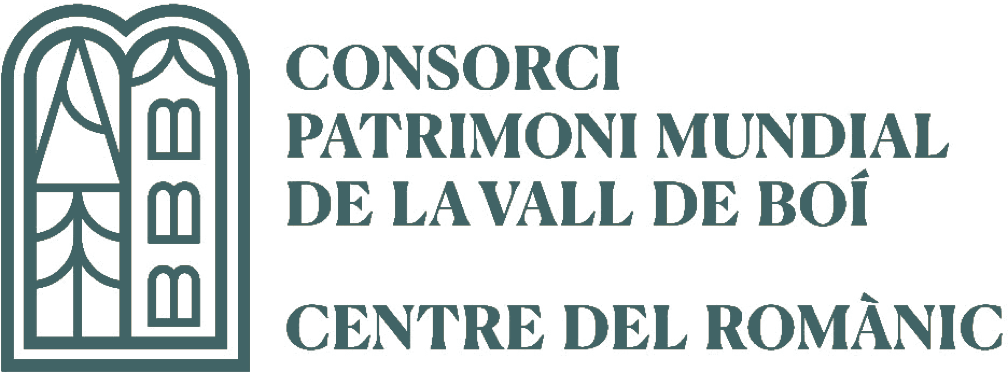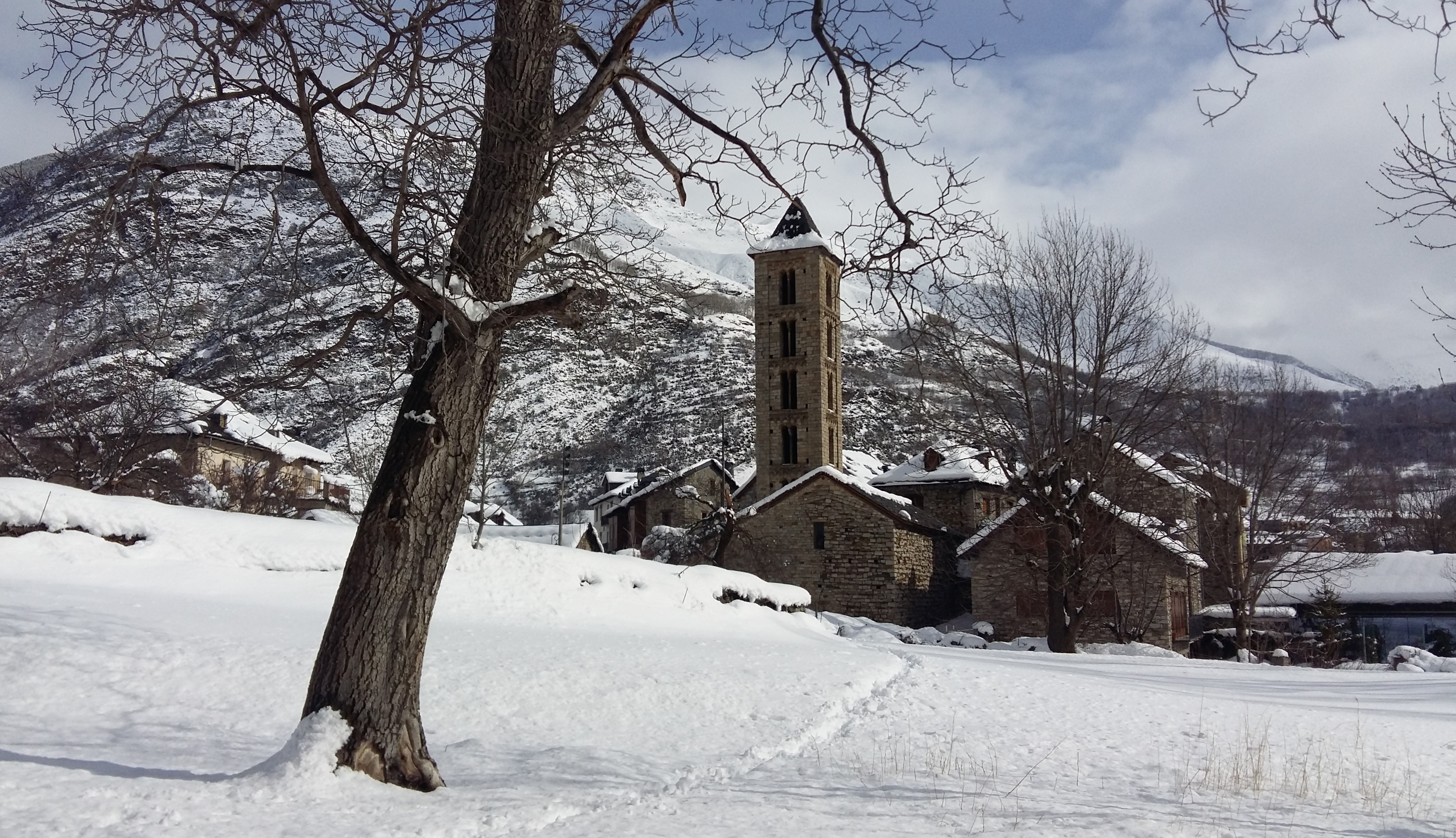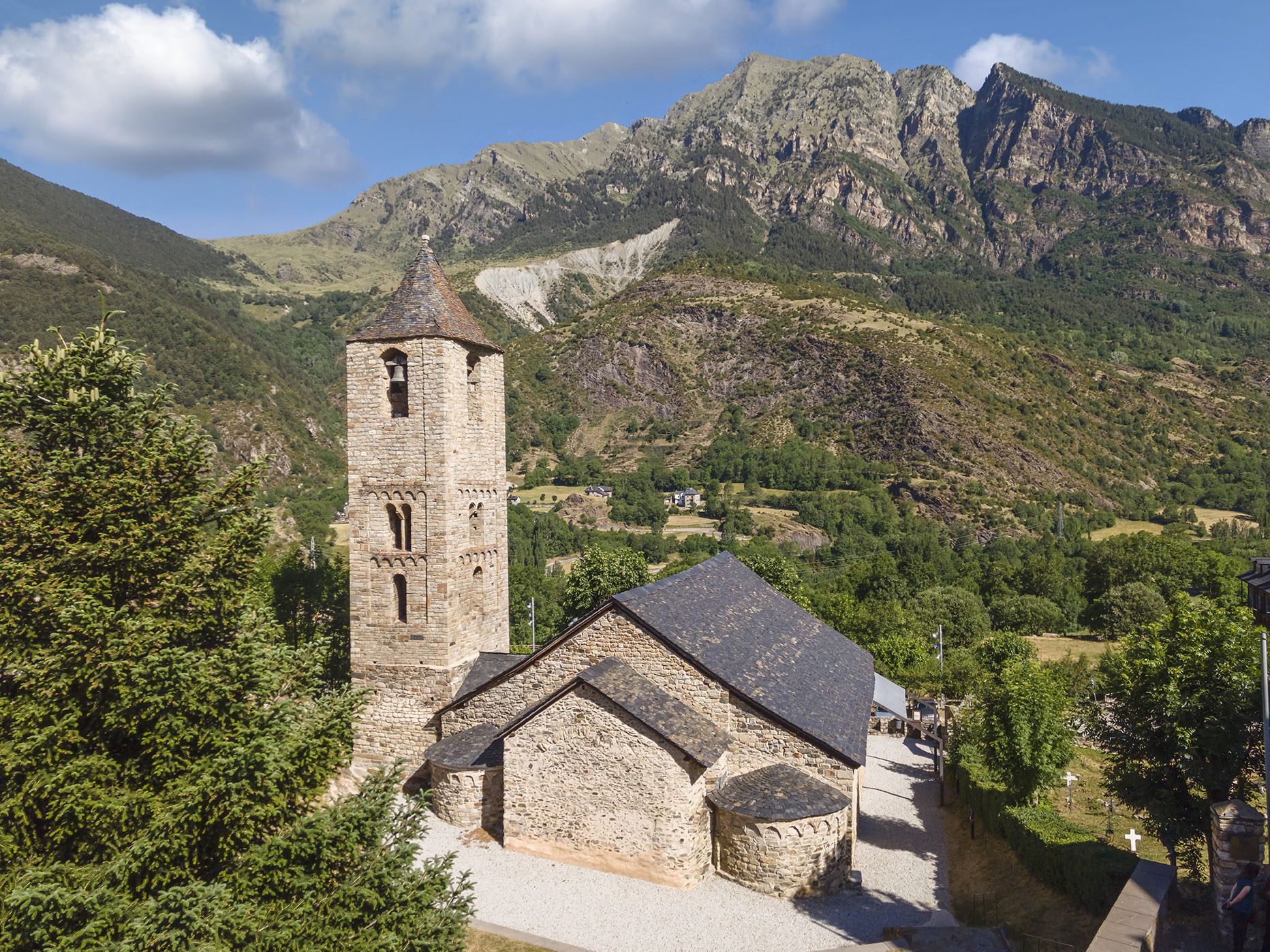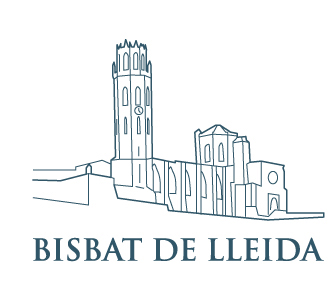In Santa Eulàlia you’ll find one of the best bell towers in the valley, a slender square construction six floors high with the typical Lombard Romanesque decoration: blind arches and sawtooth friezes.
Aligned with those of Sant Joan de Boí and Sant Climent de Taüll, the bell tower fulfilled the functions of communication and surveillance of the territory.
Inside the church you can see a copy of the sculptural ensemble of the Descent from the Cross, the only one from the Erill Workshop preserved in its entirety. The originals are divided between two museums, the National Museum of Art of Catalonia and the Episcopal Museum in Vic.





























